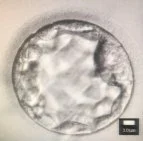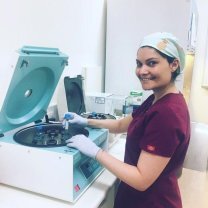Embryo Grading: Do Embryo Grades Really Matter?
Today we share expert insight from Kristen, an Embryologist who will answer a few of your top embryo grading questions. Stay tuned for future embryology articles, in our embryology series.
Everything You Need to Know About Embryo Grading
Do embryo grades really matter?
Statistically, while better graded embryos do have a higher implantation rate and higher clinical pregnancy rate, you cant do anything about the embryos that you have, so I do say, don’t stress too much as you cant do anything about it. Poor quality embryos can make healthy babies, and the most beautiful embryos can fail. Of course, we like to see transfer of good quality embryos, however the reality is, it's not always possible and that doesn’t mean the chance of pregnancy is impossible.
We do see patients use up all of their good quality embryos and not get a pregnancy, and then with their final, poorer quality embryos, get pregnant. A lot of patients get upset if we tell them their embryos are grade 2 on day 2/3 and they don’t have any grade 1s. But we rarely see grade 1 embryos, so most of our pregnancies are from grade 2s!
How do you grade embryos? Is the grading system different per clinic? Is there a big difference between a/b/c? Why do embryologists use a good/fair/poor rating on blastocysts?
Different clinics have different grading systems! As an example, below:
For cleavage stage embryos (Day 2-3) it is common to grade with the number of cells, amount of fragmentation, symmetry of the cells, how even sized the cells are. For example, an 8 cell grade 2. A grade 1 would be perfect, grade 2 would have good cells, a small amount of asymmetry or fragmentation, grade 3 would have very uneven cell sizes or be highly fragmented.
For blastocysts we grade the inner cell mass (ICM) and trophectoderm as A, B, C or some clinics good/fair/poor
Grade A – ICM: lots of cells, plump, good size, trophectoderm will have many distinct cells in a uniform layer
Grade B – ICM: fewer cells, smaller in size, trophectoderm will have fewer layers or appear slightly grainy
Grade C – ICM: very thin or absent, grainy, poor quality, trophectoderm will have very few, irregular shaped cells, very grainy or poor quality
Who decides which embryos are not healthy enough?
We have specific criteria that determine the normal embryo development for each day, and what is suitable quality. The Embryologist will decide what is suitable for transfer, storage or disposal.
What embryo grades have the highest success rates?
Statistically, the higher graded embryos such as a hatching or expanded AA on day 5 have the best success rates. For cleavage stage embryos, studies show embryos that are 4 cell on day 2 and 8 cell on day 3 have a greater chance of success, as do embryos which show signs of early compaction (day 3, as we normally see compaction on day 4).
Kristen has been an Embryologist for 5 and a half years. She studied Biomedical Science and has a Master’s degree in Reproductive Medicine. She's always had a passion for fertility and a desire to help others going through such a hard and emotional journey.
Medical Disclaimer:
The information provided in this blog is intended for general informational purposes only and should not be considered as a substitute for professional medical advice, diagnosis, or treatment. Always seek the advice of your healthcare provider or qualified medical professional with any questions you may have regarding a medical condition. Never disregard professional medical advice or delay in seeking it because of something you have read in this blog.



